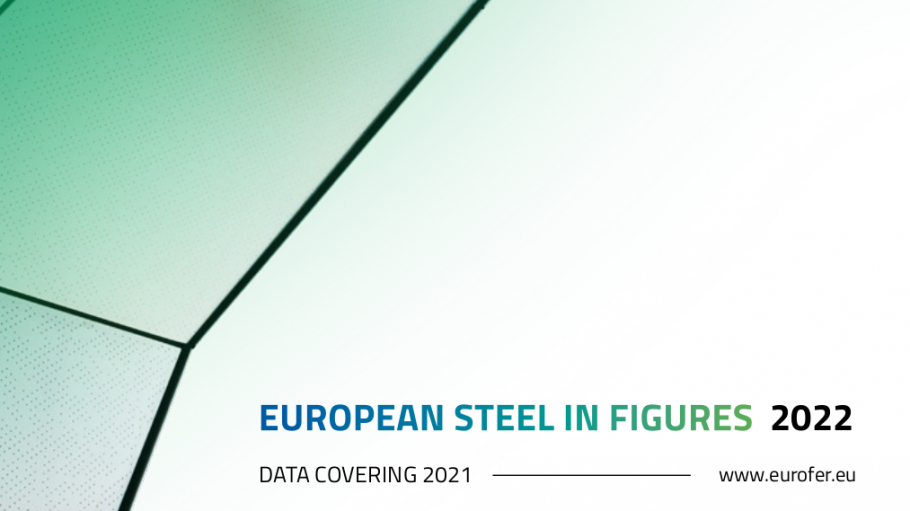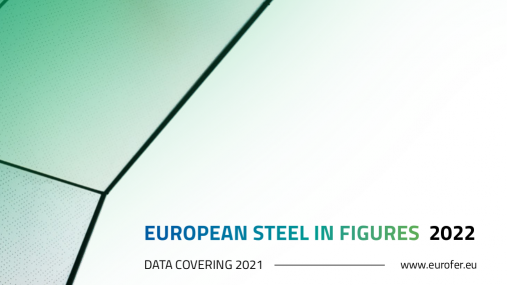
Publications » Brochures, booklets or fact-sheets » European Steel in Figures 2022
European Steel in Figures 2022
Downloads and links
Recent updates

European Steel in Figures 2022 is the fourteenth edition of the European Steel Association’s (EUROFER) statistical guide, which covers data up to 2021.
It is the first edition that takes fully into account the departure of the United Kingdom from the EU and its internal market. From now on, all aggregated data for the EU refer exclusively to EU27, and historical datasets have been adapted accordingly.
The numbers presented in the 2022 edition identify the main trends of the past year through data, and reflect both the new reality post Brexit and the consequences of the pandemic. In particular, they show the strong rebound experienced in the aftermath of restrictive COVID measures and the progressive slowdown of the recovery due to increasing supply chain disruptions, soaring energy prices and shortages of raw materials occurred in the second half of 2021.
We hope that our statistics will be of use for those working within and with the steel industry. We also hope that they can help guiding policymakers both at EU and national level in making the right choices when it comes to political decisions impacting the industry, such as climate, energy and trade policies.
We wish you a fruitful utilisation of European Steel in Figures 2022.

Download this publication or visit associated links
Brussels, 8 May 2025 – Seventy-five years ago, on 9 May 1950, the Schuman Declaration laid the foundation for European unity, placing coal and steel at the heart of a unique peace project that has brought unparalleled prosperity across the continent and beyond. As the EU commemorates this milestone, the fate of Europe’s steel industry will once again determine Europe’s future.
Brussels, 28 April 2025 - In April 2025, EUROFER and EUROMETAL leaders convened to discuss potential collaboration areas for strengthening messaging and initiatives to support the European steel and steel-using industries. This initial exploratory meeting was prompted by the Steel Dialogue on 4 March 2025, hosted by the European Commission, during which EUROMETAL raised concerns regarding the impact of imported steel derivatives on European distribution, processing, and manufacturing industries.
Developed with the support of the Offshore Wind Foundation Alliance and European Wind Tower Association, the position paper outlines the strategic importance of wind components for Europe’s green transition and calls for targeted measures to strengthen their role within the NZIA.